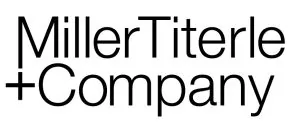For most of 2020, the new year seemed as out of reach as a galaxy far, far away. However, 2021 has finally dawned and with it the new Work Place Harassment and Violence Prevention Regulations (the "Regulations") came into effect on January 1. In September, we provided you with a preview of these Regulations in Part V - A New Scope as part of our series on other legislative changes in employment law, which you can check out here. Now we want to kick-it into hyperdrive and bring you fully up to speed.
If you are a federally-regulated employer, the time has come - the new Regulations are here and you are required to meet a set of new standards to prevent and address work place violence and harassment. As a reminder the definition of work place harassment and violence has been expanded and now includes:
"any action, conduct or comment, including of a sexual nature, that can reasonably be expected to cause offence, humiliation or other physical or psychological injury or illness to an employee, including any prescribed action, conduct or comment."
Federally-regulated employers are required to have processes in place to address work place harassment and violence. Employers must develop these processes with a qualified partner, such as a policy committee, work place committee, or health and safety representative. Steps to be taken include:
- i) conducting risk assessments;
- ii) developing prevention policies;
- iii) providing training and information; and
- iv) responding to complaints.
Below are some of the key elements outlined in the Regulations.
Risk Assessments
The first step is for an employer and partner to conduct a work place risk assessment. When assessing risk factors, an employer must consider:
- + work place culture, activities, conditions, and organization;
- + circumstances outside the work place like domestic violence that could lead to harassment at work;
- + documentation and information about harassment and violence in the work place;
- + the layout of the work place; and
- + existing health and safety practices.
Risk factors can be both internal and external. Some examples include working with difficult customers, working alone, or working in an environment that lacks diversity or provides limited job security. To help you conduct a work place assessment and identify the wide range of risk factors, you can check out the sample tool created by the Government of Canada. The Government also recommends the DV at Work website for specific tools on domestic violence at work.
Note that the work place assessment must be monitored on an ongoing basis and updated to respond to changes in the identified risk factors or if issues arise with the prevention policy. The assessment must also be reviewed and potentially updated if the employer is notified about an incident of harassment or violence and it is not successfully resolved, or if the alleged party responsible is not the employer or an employee. Aside from these circumstances, a review is required every three years.
Prevention Measures and Policies
Once a work place risk assessment has been completed, the employer and partner have 6 months to develop and implement preventive measures which mitigate the risk of work place violence and harassment. Preventative measures can take numerous forms and should consider the specific organization, space, and practices of the workplace. For instance, installing security cameras or key cards may be necessary in one workplace, others may require implementing check-ins or a buddy system. The Canadian Centre for Occupational Health and Safety provides helpful resources for developing preventative measures.
One element of prevention is creating a prevention policy that is available to all employees. Again, this policy must be reviewed every three years, or when changes arise, and updated if necessary. Your prevention policy must contain several components, including:
- i) a mission statement;
- ii) a description of the risk factors;
- iii) an outline of training, resolution, and emergency processes; and
- iv) a description of supports and privacy mechanisms.
Developing emergency procedures to handle threats and immediate dangers is an important part of this policy. Employers should check the Regulations for a complete list of policy requirements.
Training and Information
A safe workplace is one where employees understand the seriousness of workplace harassment and violence and are trained to recognize and respond to it. Under the new Regulations, employers must provide workplace-specific training, which employees and the employer must participate in. If the workplace training requirements change at any time the training protocols must be reviewed – otherwise they must be reviewed at least every three years.
Federal employers have one year to participate in training after the Regulations became effective on January 1, 2021. They also have one year to train employees hired before this date, but new hires must be trained within 3 months of starting work. All employees must re-participate in training if it is changed, if they are moved to a higher-risk role, or at least every three years. Employers must also participate in training every three years.
Providing employees with information about support services is also a component of the new Regulations. Consider what medical and counselling services, shelters, or crisis lines are available in your area – The Crisis Centre of BC or Crisis Services Canada may be helpful starting points.
Making and Responding to Complaints
Employers must appoint a person or team as the "designated recipient" of complaints about work place harassment or violence. The designated recipient does not have to be an employee but the employer must ensure that the designated recipient has participated in training before starting their role and that they also participate in training every 3 years.
If the employee has a complaint against the employer, they must provide it to the designated recipient, but all other complaints can go to the employer or the designated recipient. Every complaint must be reviewed. Complaints can be made anonymously but the employer can consider the issue resolved if the complainant cannot be identified.
Employers or the designated recipient have 7 days to respond to the complainant and may also contact the party named in the complaint. Within 45 days of receiving the complaint, the involved parties must begin to work to resolve it through negotiation. Both the complainant and responding party have the right to be represented during the resolution process. The parties can also agree to try conciliation/mediation.
If the issue is not resolved by negotiation or conciliation/mediation, the complainant can ask that there be an investigation. Employers should be careful when choosing an investigator and develop a list of qualified investigators with the partner. The investigator cannot have a conflict of interest and must have knowledge and experience in workplace harassment and violence prevention and the applicable legislation, as well as investigative training. The employer and workplace committee or health and safety representative must decide how to implement investigative reports.
All complaints must be resolved within one year after the day the complaint was received. Employers must always meet the privacy and confidentiality requirements in their prevention policies, as required by the Regulations.
Penalties and Reporting Requirements
The Regulations set out annual reporting requirements for incidents that have occurred. Fatalities related to incidents must be reported within 24 hours of the employer becoming aware of the fatality.
New penalties for employers failing to comply with the health and safety and labour standards under the Canada Labour Code and its regulations can also be found under Part IV of the Act and in the Administrative Monetary Penalties (Canada Labour Code) Regulations: SOR/2020-260. You can check out the news release and quick facts about the penalties provided by the Government in December 2020.
A special thank you to our articling student, Linette Lubke, for her contributions to this blog post!
The content of this article is intended to provide a general guide to the subject matter. Specialist advice should be sought about your specific circumstances.



